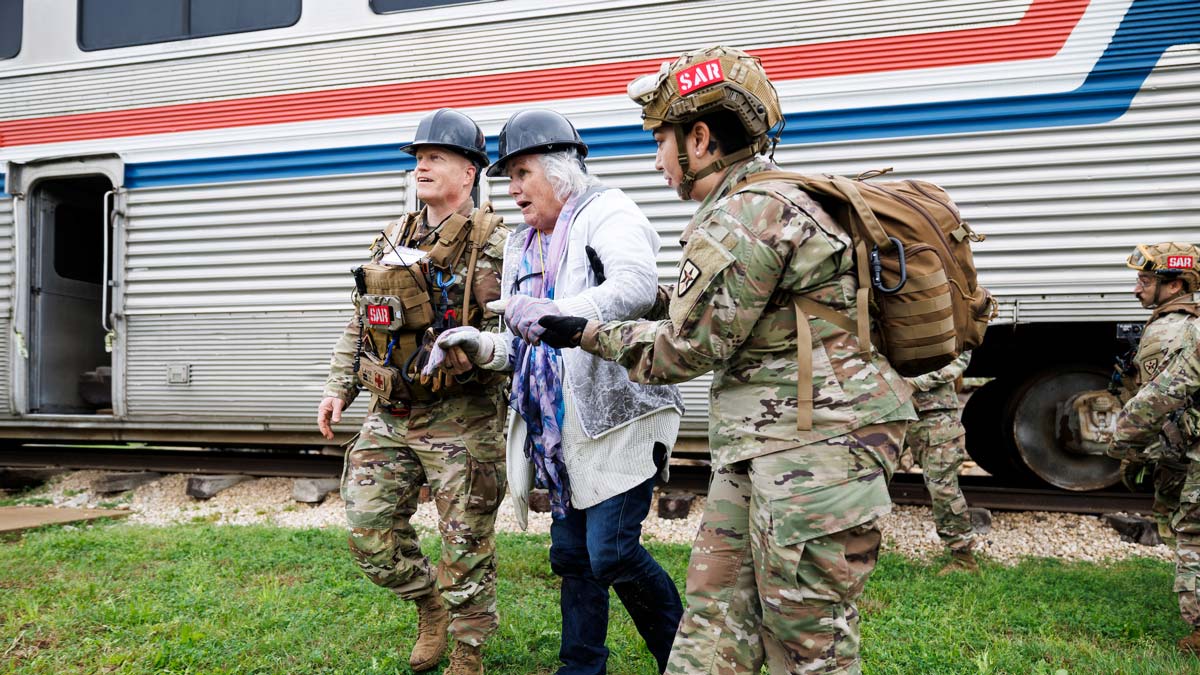More than 600 Texas A&M University students responded to a simulated train derailment as part of a daylong training exercise known as Disaster Day.
Held every year at Texas A&M Engineering Extension Service’s (TEEX) Disaster City, a 52-acre mock city where disaster scenarios are simulated for hands-on training experiences, the event gives students who have plans to go into emergency services or similar fields an opportunity to experience something close to an actual disaster before they are needed for the real thing.
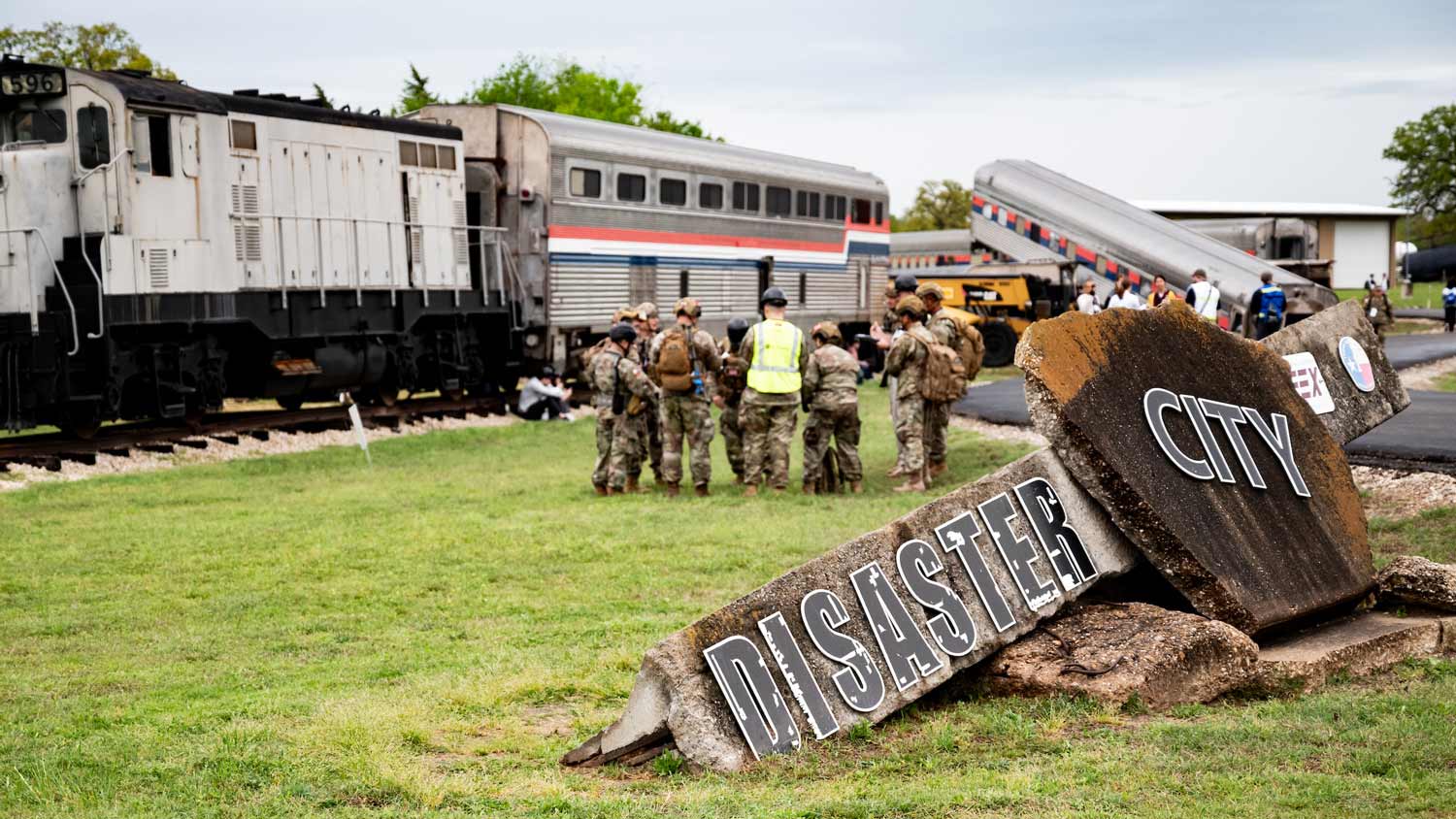
The 2025 Disaster Day scenario was a simulated train derailment.
“It’s real life,” said Cynthia Emeremnu ’28, who acted as a burn victim in this year’s Disaster Day. “One day, there’s a hurricane or an earthquake or a shooting. We should be prepared as providers to be able to assist in these situations. This is what we train our whole lives to do.”
Students from the Texas A&M Colleges of Dentistry, Medicine and Nursing, the Irma Lerma Rangel College of Pharmacy and the School of Public Health, as well as athletic training, educational psychology and veterinary medicine students and the Corps of Cadets, take part in the training as either patients or providers. The convergence of multiple fields mimics the interprofessionalism and collaboration required during the response to an actual disaster.

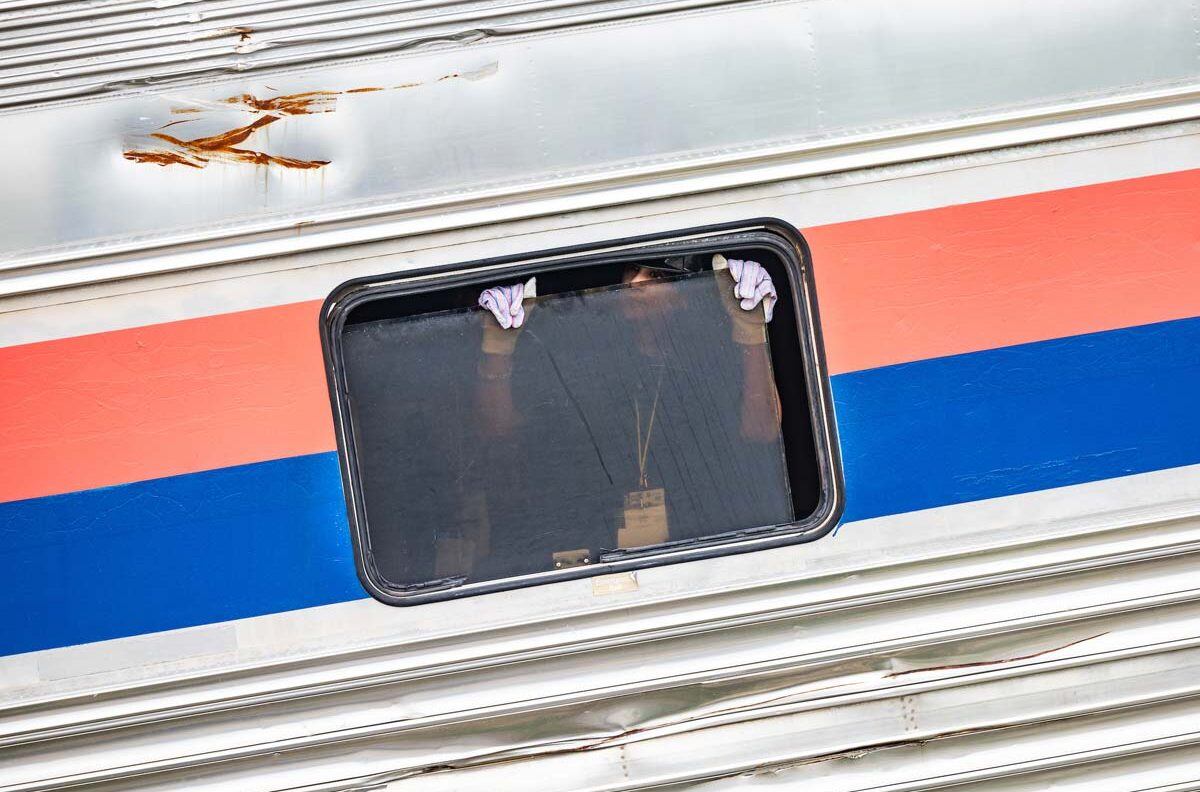

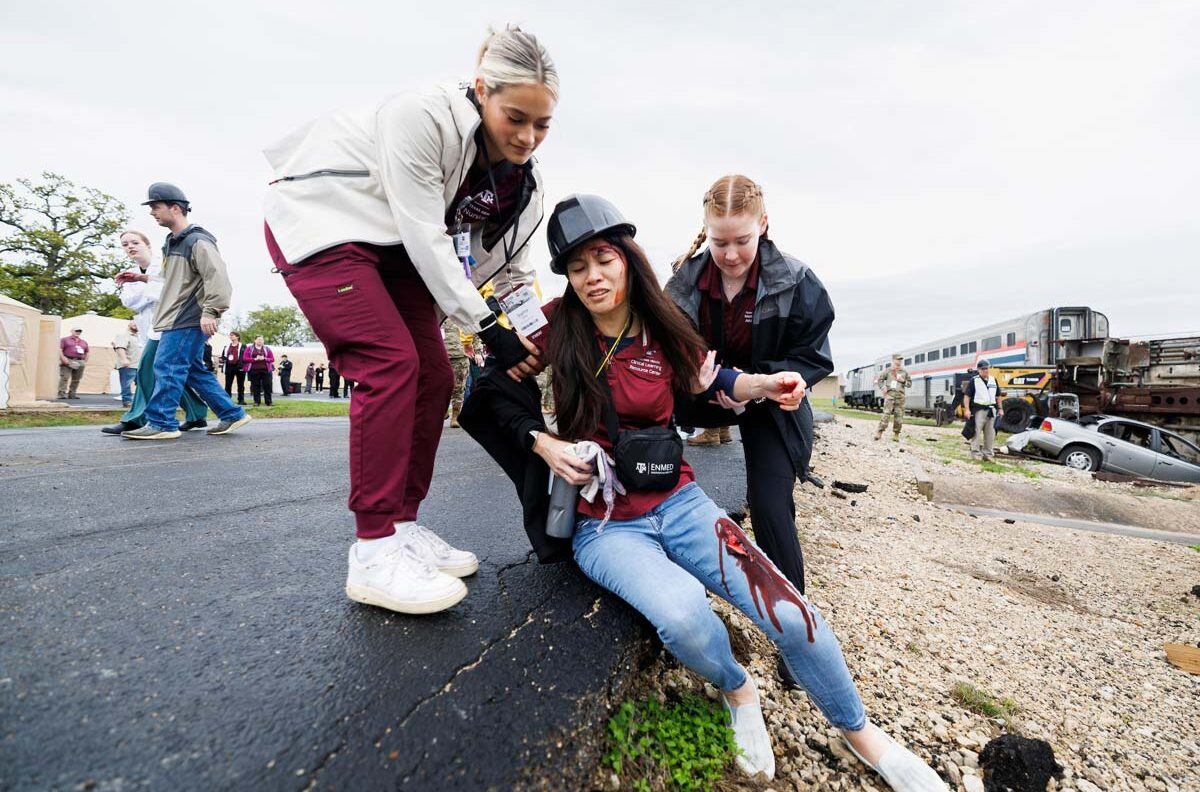
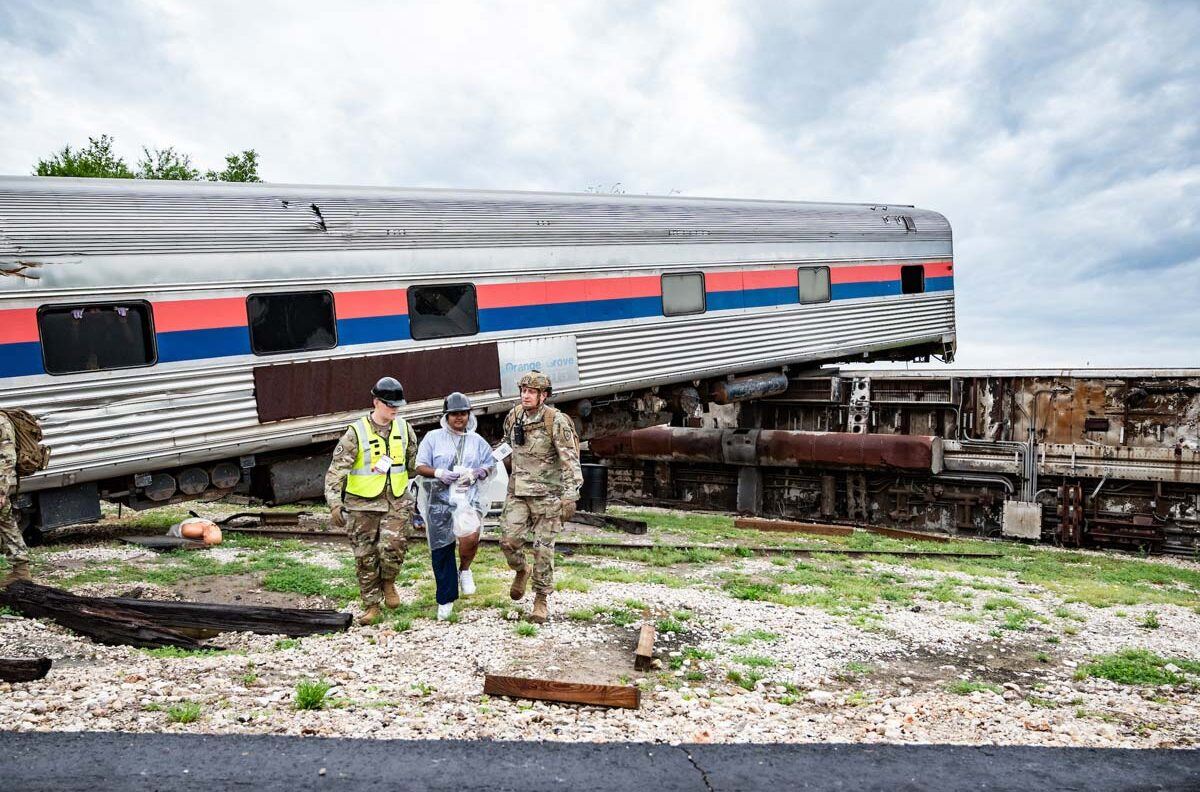

Photos by Abbey Santoro and Whitney Moody/Texas A&M University Division of Marketing & Communications
“Research shows that well-developed collaborative skills improve patient and population outcomes, especially during a disaster,” said Christine Kaunas, Assistant Vice President for Interprofessional Practice, Education and Research at Texas A&M Health, who oversees planning and implementation for Disaster Day. “From 1980-2024, there were 190 confirmed weather/climate disaster events — an average of four per year — with losses exceeding $1 billion each, including wildfires, tropical storms, hurricanes and winter storms. Disaster Day equips our students to stand on the front lines, ready to serve when disaster strikes.”
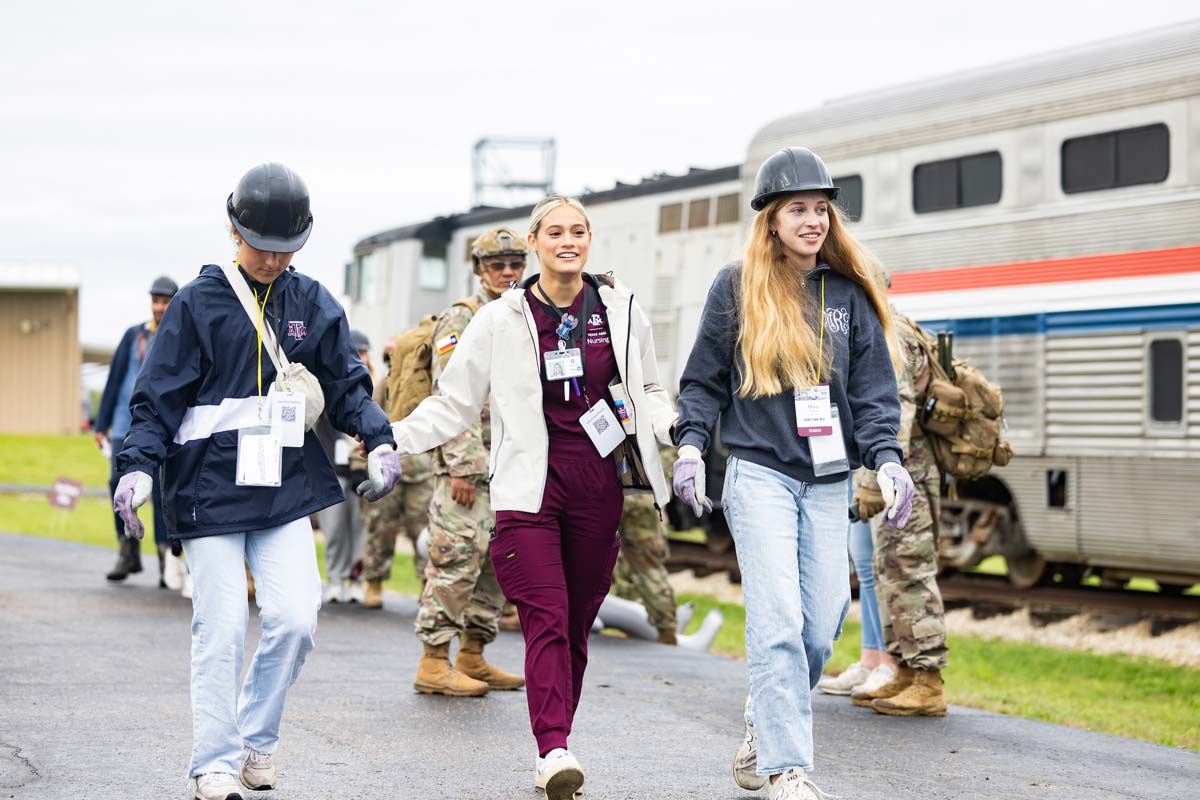
Disaster Day equips our students to stand on the front lines, ready to serve when disaster strikes.
The day includes triage at the disaster site, patient care at mock field hospitals, mental health care and needs assessment at an evacuation shelter, and disaster management and simulation oversight. Each student’s field of study determines what they will be responsible for, such as determining medications needed, providing specialized care in orthopedic and soft tissue trauma, treating head and neck injuries, or caring for animals affected by the disaster.
The specific Disaster Day scenario is kept secret until the day of the event to make the simulation more realistic, and each year is different. The event is run by a student team that includes over 50 Texas A&M Health students who are responsible for everything, from organizing student participation and training to creating the case scenarios for the drill. They receive guidance from Texas A&M faculty and staff involved in health care disciplines, as well as TEEX/Disaster City staff and members of the Texas Division of Emergency Management.
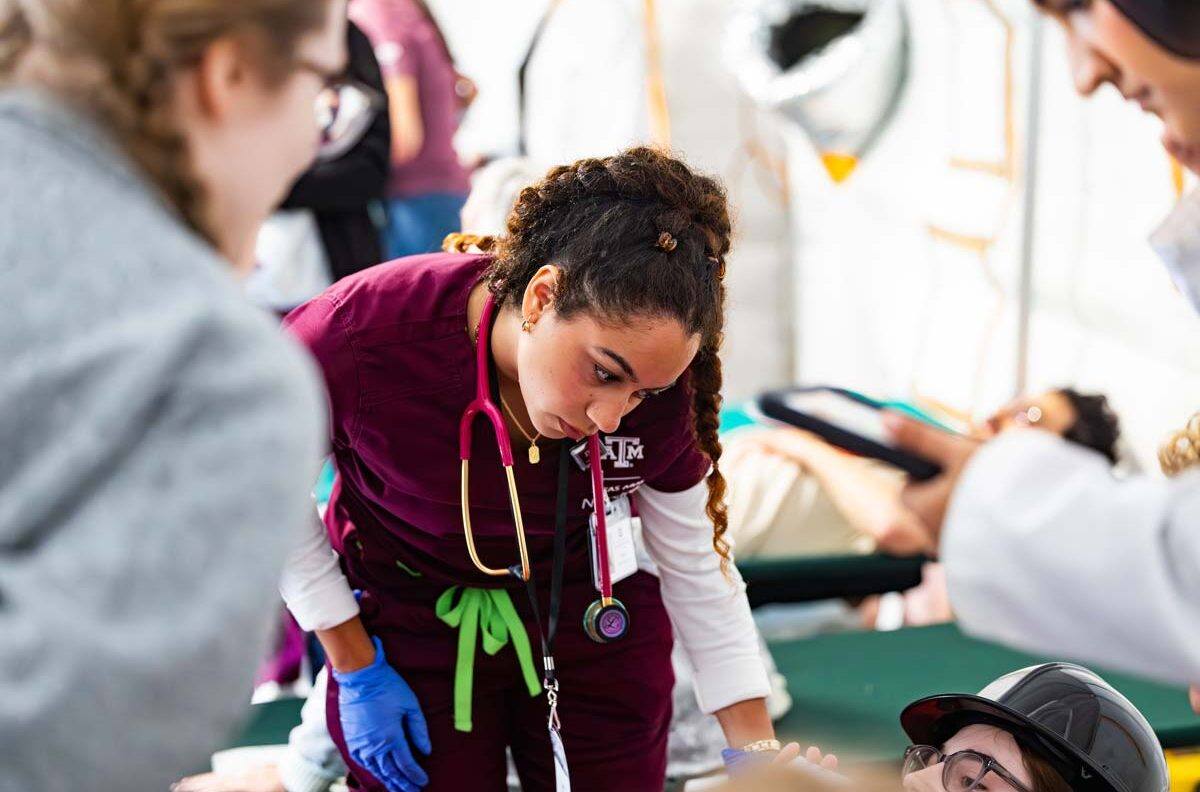
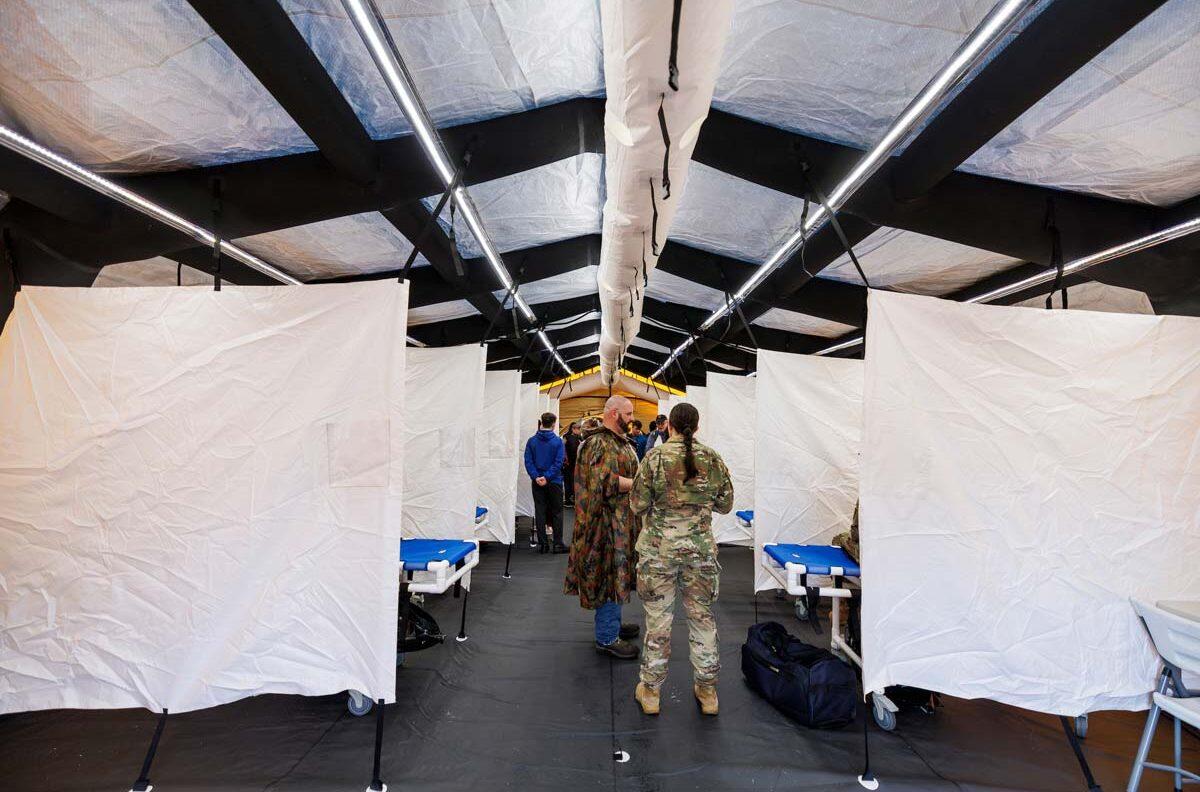
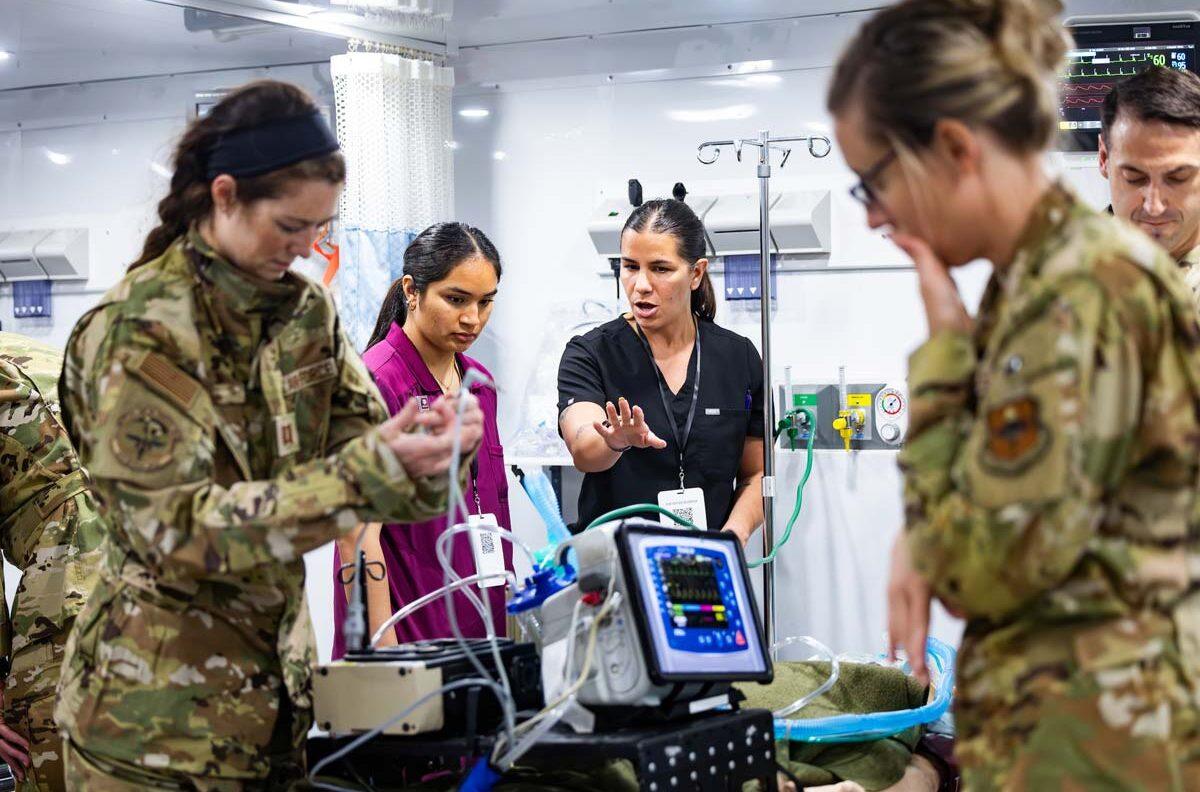

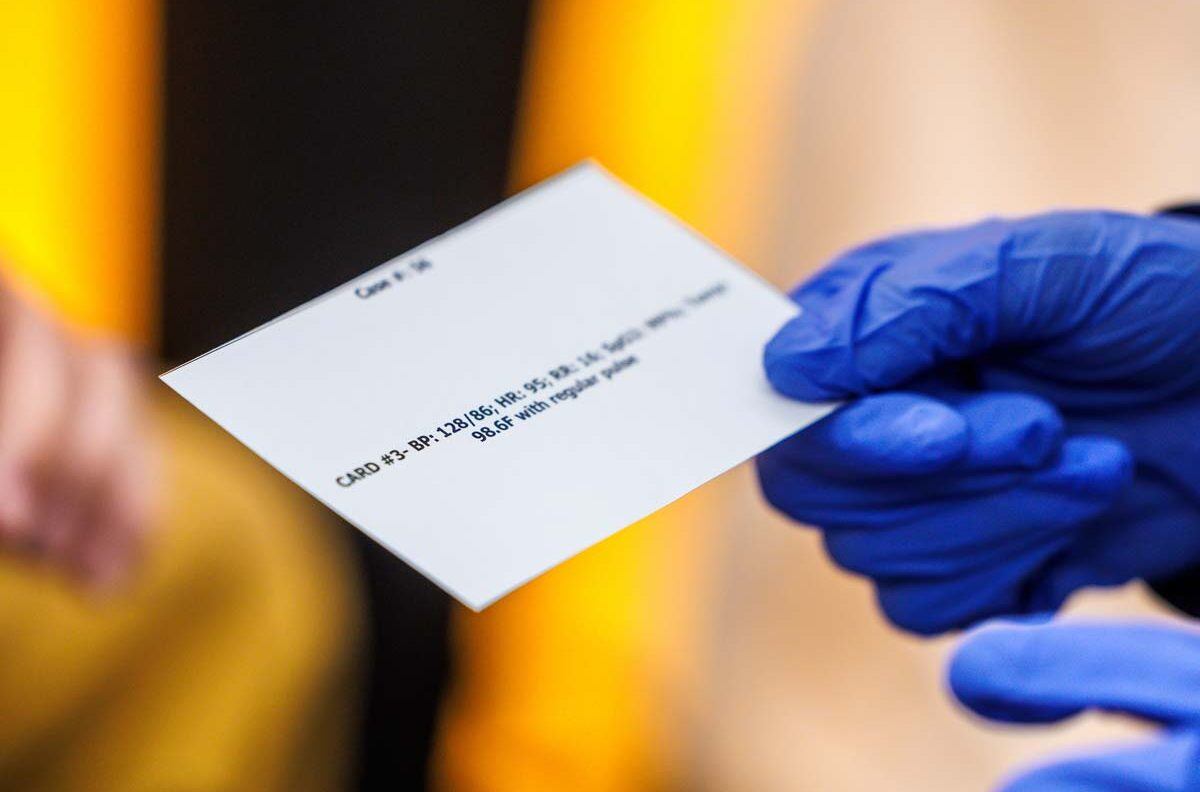

Photos by Abbey Santoro and Whitney Moody/Texas A&M University Division of Marketing & Communications
The Texas A&M College of Nursing initiated the event in 2008 in the aftermath of Hurricane Ike to ensure students are prepared to respond in the event of an emergency. The event — originally conducted in a church gym — is now led by the Office of Interprofessional Practice, Education and Research at the Texas A&M Health Science Center (Texas A&M Health) and takes place at Disaster City in College Station, a world-class training facility for emergency responders.
Tyler Watson ’27, student planning director, said, “Being able to achieve this big feat to serve our fellow students, seeing so many people being excited, is encouraging because this matters to people. It’s not an easy task, but it’s one that means a lot and will make a difference.”

